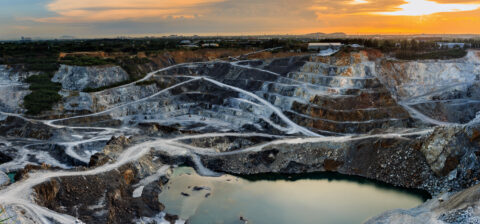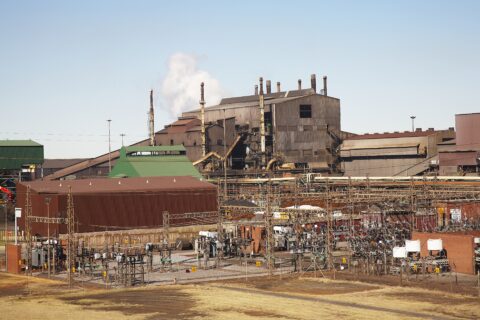SA Mining
New ASM Policy And Resettlement
The Department of Mineral Resources and Energy (DMRE) recently published two key policy documents dealing with artisanal and small-scale mining and resettlement as a result of mining. These are the Artisanal and Small-Scale Mining Policy, 2022 (the ASM Policy) and the Mine Community Resettlement Guidelines, 2022 (Resettlement Guidelines).
Although they don’t directly mention environmental, social and governance (ESG), both policy documents illustrate the desired integration of ESG standards in the mining sector. The regulator is attempting to provide mining companies, junior miners, and other smaller entrants into the mining sector with guidelines and tools on ASM, and the resettlement of mine communities, to help them fulfil their ESG obligations.
The ASM Policy
Currently, mining laws in South Africa do not regulate ASM as a discrete form of mining. Instead, a mining permit which is less onerous than a mining right can be obtained, but ASM miners still struggle to meet its requirements.
The ASM Policy aims to create a formal ASM industry that can operate in a sustainable manner and contribute to the economy, and it also aims to deter illegal mining. This policy is very similar to that published for public comment on 5 May 2021. It goes further than Section 27 of the Mineral and Petroleum Resources Development Act, 2002 (MPRDA), which deals with mining permits and does not specifically address ASM.
In the ASM Policy, the DMRE has opted to create a new system by introducing new permits. Consequently, legislative changes will be needed to enable the implementation of the ASM Policy.
Notably, the ASM Policy introduces formal definitions for artisanal and small-scale mining, setting out monetary thresholds to differentiate between artisanal (maximum of R1-million) and small-scale (maximum R10m) miners. It also distinguishes between illegal mining – which is a criminal activity – and ASM, for which an ASM permit is required.
Policies promoting the growth, sustainability and development of the ASM industry are welcomed to unlock the development potential in this unregulated field, but there are several points that require further consideration.
First, the extent to which ASM permits are capped: mining permits are limited to a five-hectare area, but the ASM Policy does not cap ASM permits. This could lead to an abuse of the system where holders of these ASM permits use them as a “back door” to obtain less onerous rights over large tracts of land.
This concern is bolstered by the “graduation” principle in the ASM Policy – a dual licensing method, where the existing “first come, first served” system will coexist with an invitation system. This is not in itself problematic. However, the criteria for this invitation system remains unclear.
ASM operators and large-scale operators are encouraged to coexist, through the use of instruments such as tributing agreements. These tributing agreements appear to be similar to a lease, and may need further review to ensure they provide equitable terms for the ASM operators and large-scale operations.
Given that ASM currently falls outside the legislation governing mining in South Africa, all the statutory obligations that lead to the suspension and cancellation of a right are in the governing legislation (the MPRDA); and there’s a danger that large-scale operators with tributing agreements over their mining areas could be held accountable for damage and losses they didn’t cause. It isn’t clear whether these tributing agreements are provided for under South African law and whether they would require the consent of the minister in terms of Section 11 of the MPRDA.
Second, the policy empowers the minister to designate certain areas for ASM. It is unclear whether this means that those areas would still be available for larger-scale mining, and whether existing mining rights on those areas will be considered.
Third, the ASM Policy contemplates that ASMs will have access to historic residues and stockpiles, but the MPRDA and common law limits the minister’s jurisdiction over stockpiles created before the MPRDA came into effect. In practice, those dumps have common law owners, and this could present an awkward situation for ASM permit holders, where a permit is being allocated over a dump that’s not regulated by the MPRDA.
The ASM Policy does, however, introduce positive changes. It provides structure to the ASM industry and, as it becomes formalised and pays taxes, the ASM industry will be able to contribute to poverty alleviation and economic growth. Another positive aspect of this document, which differs from the circulated draft, is that ASM may mostly be limited to surface and opencast mining. Since underground operations are by nature more dangerous and capital-intensive, this is a welcome approach.
The Resettlement Guidelines
Unlike many other industries, mining is site-specific and the physical and economic displacement of people, or a community, is sometimes an unavoidable part of the exploration and mining of mineral resources.
Resettlement for mining is not a new phenomenon. It is a global issue that’s attracted the attention of international bodies such as the International Labour Organization and the International Council on Mining and Metals, both of which have published guidance documents.
The Resettlement Guidelines outline the process for applicants and holders of prospecting and mining rights, or mining permits, to follow when their operations require the physical resettlement of landowners, lawful occupiers, holders of informal land rights and mine and host communities. It also applies to both new operations and existing mines that are expanding, and is intended to apply throughout the life cycle of the operation, whenever resettlement is necessary.
The Resettlement Guidelines propose meaningful consultation (as defined) with all interested and affected parties (including traditional authorities, land claimants, non-governmental organisations, community-based organisations, and the local municipality), followed by a Resettlement Plan, Resettlement Action Plan and Resettlement Agreement.
Once it has been signed, the Resettlement Agreement must be submitted to the DMRE. Crucially, the Resettlement Guidelines envisage that mining cannot commence until the Resettlement Agreement is concluded, which contradicts the MPRDA and fails to consider the rights and obligations that holders of rights have to commence mining operations.
Another important issue that may be encountered in implementing the Resettlement Guidelines is that there are practical challenges in determining what constitutes a community and how to obtain the requisite consent for such an agreement, especially when there are factions within community groups. Clearer direction on how to obtain valid consents and what constitutes a “community” are needed. The Resettlement Guidelines explicitly state that any compensation must be clearly distinguished from other obligations that miners may have (set out in its social and labour plans).
So while both documents represent progress in the social sphere of mining, they need more refinement to address some of the issues we have raised. Importantly, their adoption requires statutory amendments and alignment to streamline them and provide for the processes they contemplate.







 Sign-up and receive the Business Media MAGS newsletter OR SA Mining newsletter straight to your inbox.
Sign-up and receive the Business Media MAGS newsletter OR SA Mining newsletter straight to your inbox.